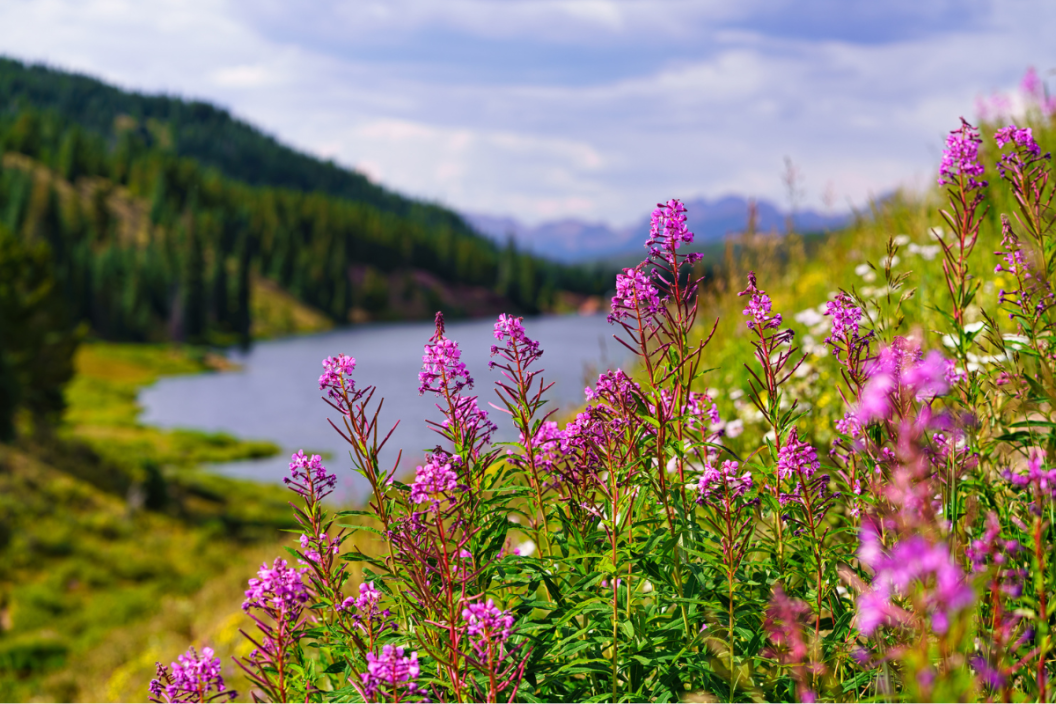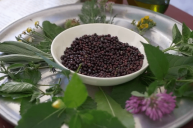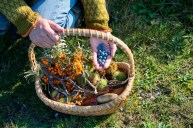For basically all of time until recently, people all over the world have been using plants to treat a variety of ailments like fever, parasites, pain, and so many more. The methods and materials of apothecaries were well-known centuries ago but have fallen into obscurity today. This list and info shares some of the more common wild plants used for medicine, food, and practical purposes found in the Rocky Mountain region of Colorado.
Keep in mind, to effectively use wild plants, one must learn basic plant identification skills (especially for poisonous plants), as well as ethical and proper collection and preparation methods.
But these resources can help you discover new ways to bring wild plants into your life for bountiful health.
Arnica (Arnica angustifolia)
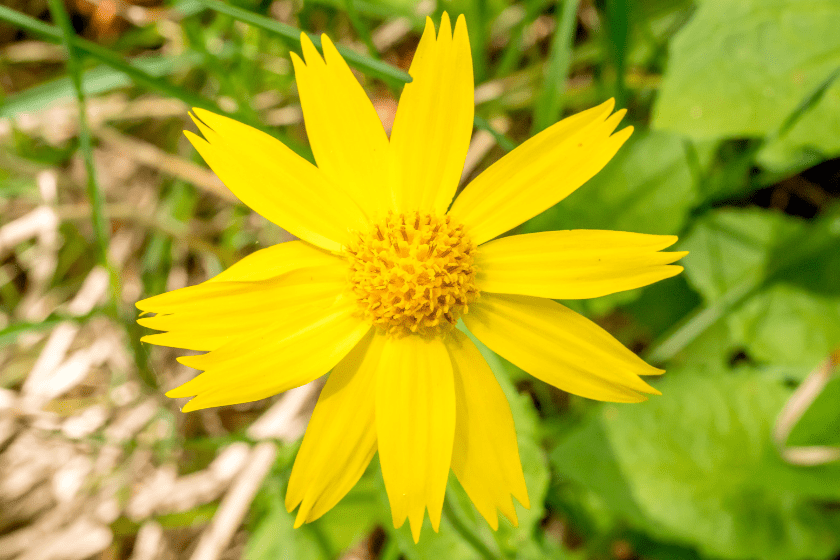
DanaHenryPhotography via Getty Images
Also known as mountain tobacco, leopard's bane, and wolfsbane
Arnica is a plant in the sunflower family and has been used for medicinal purposes since the 1500s in the folk medicine histories of Russia and the Swiss Alps. It's still popular today, and is usually applied to the skin as a cream, ointment, lotion, salve, or tincture. It's been used to soothe muscle aches and sprains, reduce inflammation, and heal wounds, which means arnica can soothe the sore muscles you'll gain when you hike to find it.
Aspen Trees (Populus tremuloides)

Jeff Poe via Getty Images
Also known as quaking aspen, trembling aspen/poplar, American aspen, mountain golden aspen, white poplar, and popple
The bark and leaves of the aspen tree are used to make medicine, mainly for treating rheumatoid arthritis, diarrhea, and even the common cold. Additional health benefits of aspen include alleviating chronic skin conditions (like eczema or acne), relieving fever, speeding up frostbite healing, and treating urinary tract infections. Aspen contains a chemical very similar to aspirin, known as salicin, so be mindful of your alcohol consumption if using aspen as medicine.
Aside from being medicinal, aspen trees have some edible uses as well. The inner bark can be eaten raw or cooked, and the sap can be boiled down into syrup, like maple tree sap, though this is usually impractical due to the smaller yield.
Also, the light, powdery substance found on the bark acts as yeast and can be used in baking bread, as sunscreen (SPF 5), and as a styptic-meaning it can help stop bleeding. And to further diversify its uses, aspen was also rubbed on the body to prevent hair growth.
Common Dandelion (Taraxacum officinale)

krblokhin via Getty Images
Another common lawn weed, dandelion cleanses the liver and blood and acts as a diuretic. Eat any part of the plant in any way you like—tea, tincture, or eaten raw in salads. They're found virtually anywhere; you certainly don't have to venture into the wilderness to track them down.
This underrated and often forsaken plant is extremely versatile. The leaves can be used similarly to spinach, with a slightly bitter and tangy taste. The flowers themselves vary in taste as they age, with petals on young flowers having a honey-like taste and more mature flowers being a bit more bitter. Dandelion can even be used to make soda.
Just be sure, as with any wild edibles, that you verify their cleanliness and give them a wash as needed. It is a benefit that dandelions are ready to be eaten as is, without much preparation needed at all to make them beneficial.
Fireweed (Chamaenerion angustifolium)
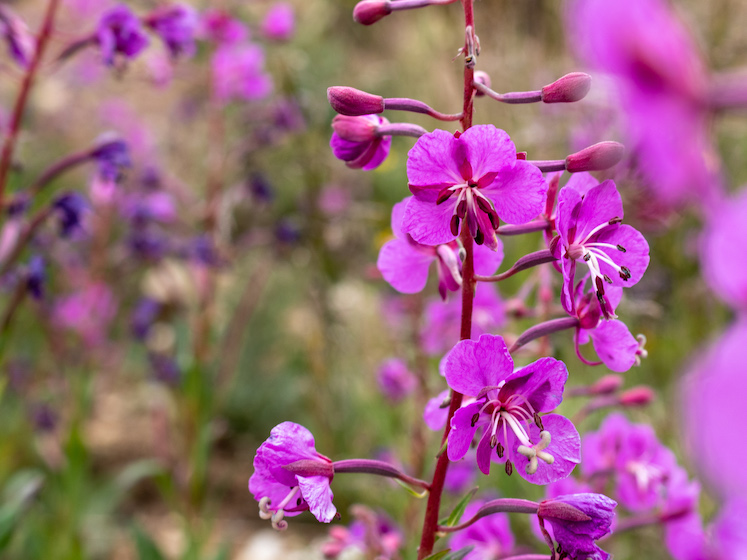
PixelView Media via Getty Images
Also known as Saint Anthony's Laurel
Aside from being a beautiful plant, the entire fireweed plant is edible and it serves both medicinal and nutritional purposes. The leaf, stalk, root, and flower are used in herbal remedies. When left to dry, the leaves and flowers are made into tea, often consumed for stomach or intestinal inflammations. The presence of the antioxidants is responsible for fireweed's medicinal effect on fungal, yeast, and bacterial infections as well as its role as an antihistamine. Traditionally, fireweed has been used for bladder and kidney disorders and has research-backed anticancer benefits, with recent evidence on its therapeutic effects on the prevention of prostate cancers.
As food, fireweed leaves and flowers are cooked in soups and stews. When young, the leaves are eaten raw. Fireweed contains several vitamins and nutrients, and is higher in calcium than 93% of foods. Mixed with some sugar, it also makes a delicious jelly.
Mullein (Verbascum)
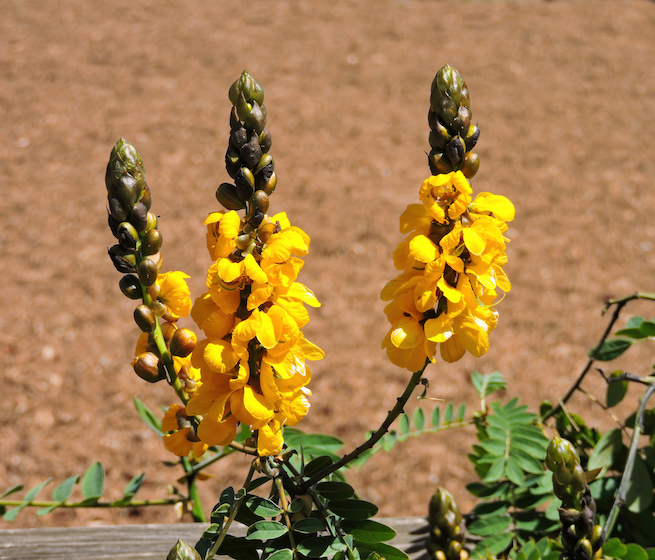
RobinOlimb via Getty Images
This versatile plant grows so abundantly across North America that it's considered a weed. Some Native Americans used fresh green mullein leaves as moccasin inserts to keep their feet warm. The fuzzy leaves offer insulation and release oil that opens up the capillaries to increase blood flow.
You can also place mullein leaves in hot water, then breathe in the steam to relieve congestion (though many Native folks just smoked the leaves for the same result) or drink it as tea. To create earache drops, you can also soak the pretty yellow flowers in oil. Mullein is a powerful healer that helps with chest congestion, cramps, sunburns, snakebites, earaches, warts, and more.
Red Clover (Trifolium pratense)
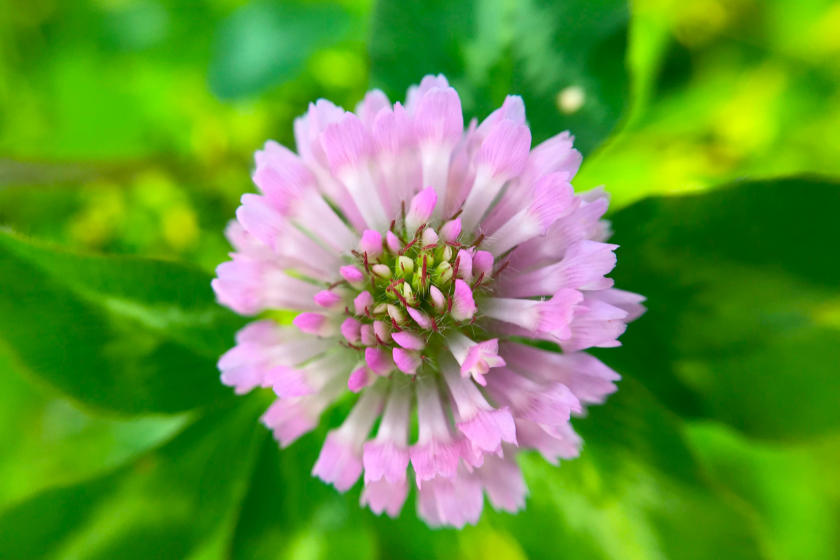
Rachel Miller via Getty Images
A group of clovers is called a cluff. This herb has historically treated skin conditions, fever, colds, and lung issues in traditional Russian and Chinese use. Floral tea is used to support bronchial-respiratory health as an expectorant and anti-spasmodic. At one time, red clover was smoked as an anti-asthmatic.
Red clover contains a mild sedative property, complementing its anti-spasmodic effects for cough. The flower is also used for inflammatory conditions associated with arthritis and gout, and has been found to contain estrogen-mimicking flavonoids, known as phytoestrogens. These substances can contribute to maintaining normal estrogen levels during menopause. This is especially helpful in reducing hot flashes and night sweats.
Thistle
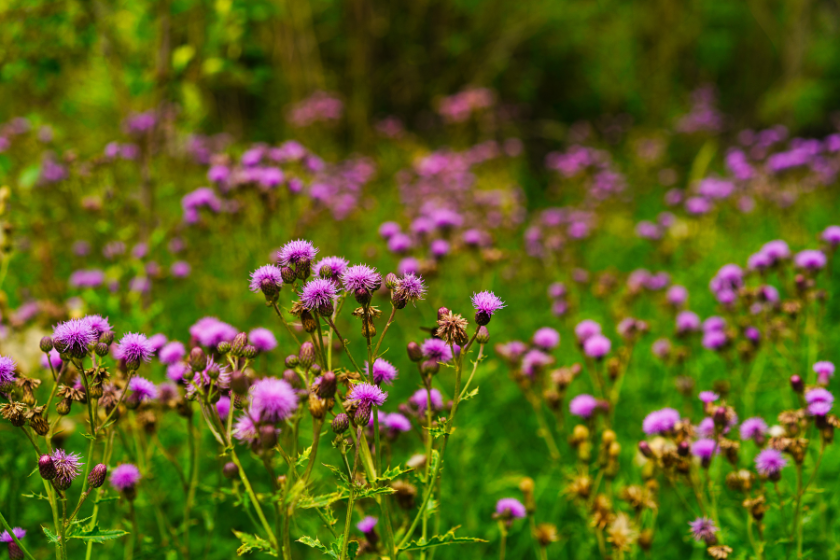
Adventure_Photo via Getty Images
Thistle is common in a lot of the U.S. Their stems or roots are boiled and eaten, and thistle is well known for its ability to treat swelling of joints and tendons, such as rheumatoid arthritis, especially in children. It has also been used to treat other inflammatory conditions, such as inflammatory bowel syndrome.
Additionally, thistle stimulates bile production and digestive activity, which has benefits such as decreasing fatigue and nausea, and improving appetite and brain fog. Thistle can help the body battle bacterial infections, and observed decrease or the complete reduction of inflammation in addition to helping to remedy infections have been noted.
Western Blue Flax (Linum lewisii)
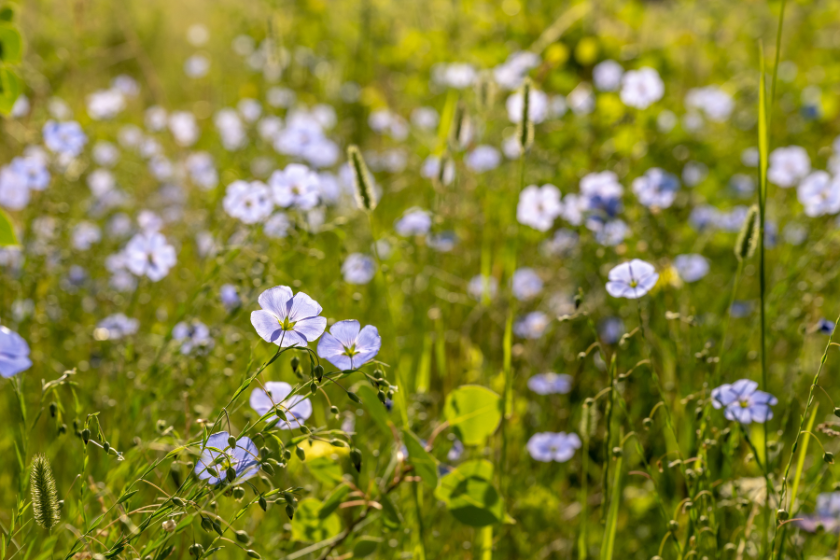
kellyvandellen via Getty Images
Also known as Lewis flax, blue flax, or prairie flax
The plant is anti-rheumatic, has agents that relieve and remove gas from the digestive system, and contains substances that give strength and tone the stomach. The fresh herb is boiled and taken internally to treat rheumatic pains, heartburn, colds, coughs, and dropsy. The oil in the seed has soothing and lubricating properties and is used in medicines to soothe tonsillitis, sore throats, coughs, colds, constipation, grave, and stones.
When mixed which an equal quantity of lime water, it is used to treat burns and scalds. Western blue flax also serves as an important component of tinctures and infusions that can be used to treat eye problems, diarrhea, and bruises. It can also be used as a hair and skin wash, and is even said to help prevent hair loss.
Wild Sage (Salvia)

CatLane via Getty Images
Sage is an important herbal medicine with several uses. It is used for sore throats as a gargle, spray, or tea; for excess sweating including menopause; for oral health as a tooth powder; and for digestion as a tea.
The health benefits of sage tea may also include its possible ability to lower anxiety symptoms, be anti-carcinogenic, reduce menopausal symptoms, detoxify and purify the blood, reduce blood sugar levels, boost appetite, soothe the stomach, and overall stimulate the immune system.
There's almost nothing this magical and fragrant herb doesn't do, when you also take into consideration all of these above, and that the fresh leaves, rubbed on the teeth, will cleanse them and strengthen the gums, and gargling with tea helps aid gingivitis and toothaches.
Yarrow (Achillea millefolium)
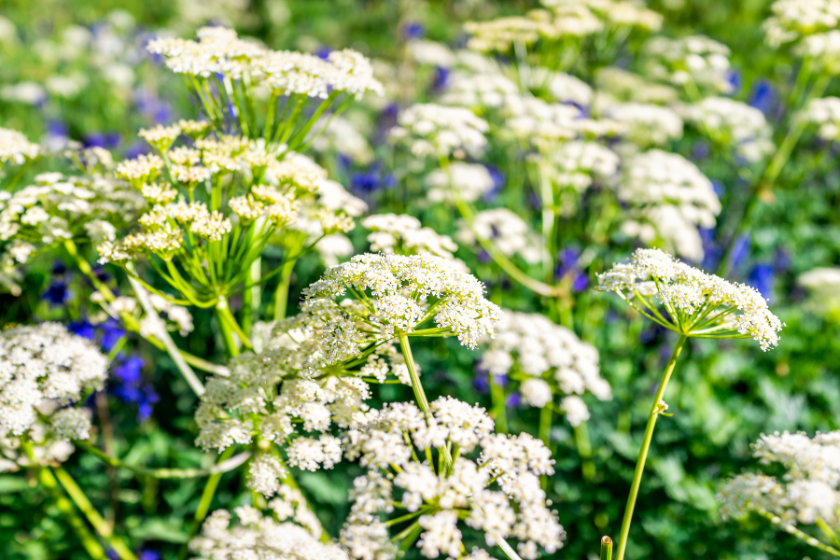
krblokhin via Getty Images
Also known as old man's pepper, devil's nettle, sanguinary, milfoil, soldier's woundwort, and thousand seal
Yarrow tincture is a medicinal herbal remedy that helps with health ailments such as respiratory, digestive, diabetic, bleeding, liver, and other issues. Additionally, Yarrow has medicinal uses in wound and blood coagulation and stops bleeding; it is also antimicrobial and reduces fever.
Yarrow also lowers blood pressure, stimulates blood flow in the pelvic area (especially the uterus), and is anti-spasmodic, helping with menstrual cramps and discharge. Its anti-inflammatory properties make it an excellent treatment for rheumatic pain, and its anti-catarrhal (which removes excess mucous from the body) makes it useful in treating pneumonia.
